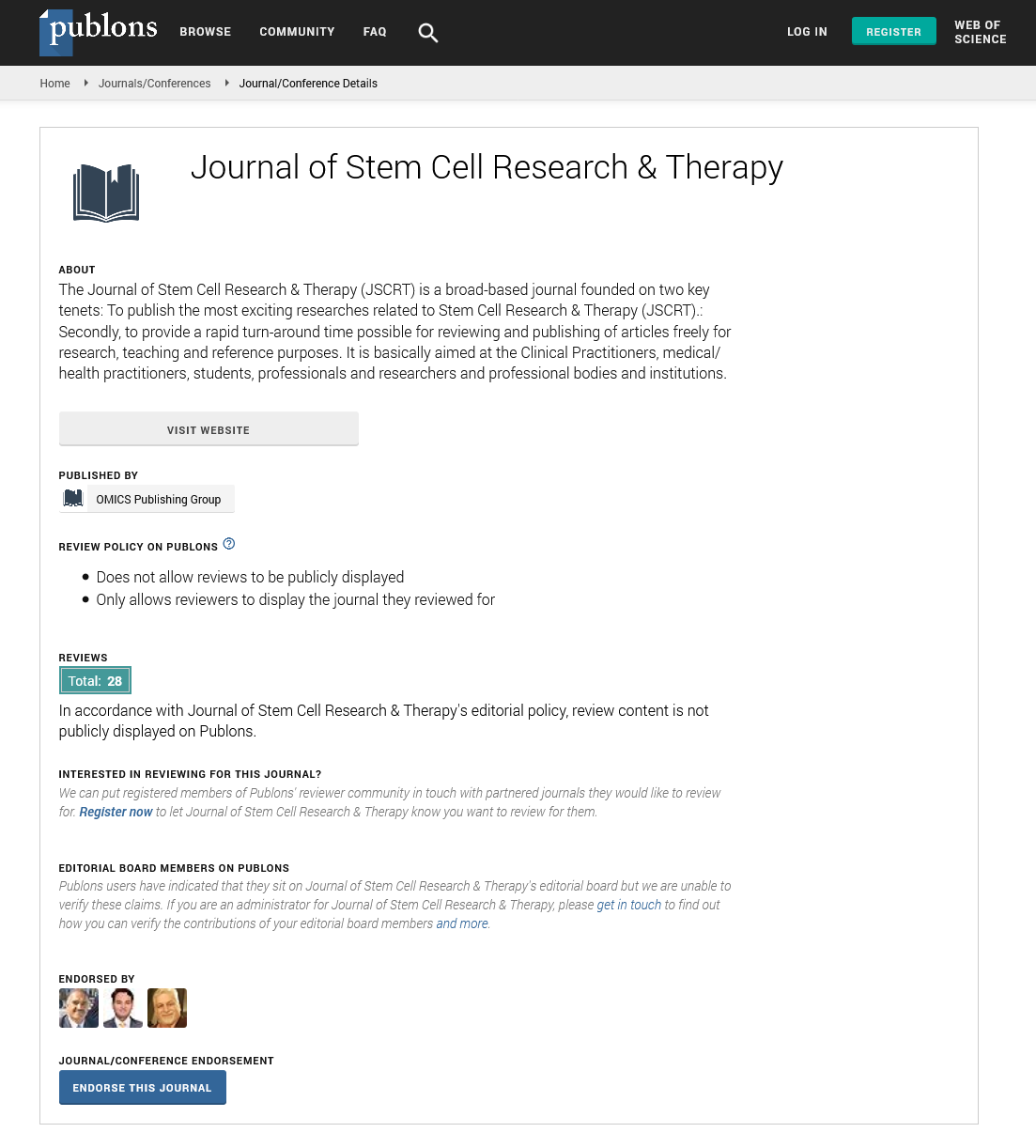Indexed In
- Open J Gate
- Genamics JournalSeek
- Academic Keys
- JournalTOCs
- China National Knowledge Infrastructure (CNKI)
- Ulrich's Periodicals Directory
- RefSeek
- Hamdard University
- EBSCO A-Z
- Directory of Abstract Indexing for Journals
- OCLC- WorldCat
- Publons
- Geneva Foundation for Medical Education and Research
- Euro Pub
- Google Scholar
Useful Links
Share This Page
Journal Flyer

Open Access Journals
- Agri and Aquaculture
- Biochemistry
- Bioinformatics & Systems Biology
- Business & Management
- Chemistry
- Clinical Sciences
- Engineering
- Food & Nutrition
- General Science
- Genetics & Molecular Biology
- Immunology & Microbiology
- Medical Sciences
- Neuroscience & Psychology
- Nursing & Health Care
- Pharmaceutical Sciences
Abstract
Heterogeneity in Human Embryonic Stem Cells May Prevent Endodermal Guided Differentiation
Srabani Kar, Konsam Surajlata and Ena Ray Banerjee
This study aims at exploring the use and peculiarities of stem cell therapy for pulmonary injury and degeneration. The success of stem cell therapy for clinical use needs the validation of several issues. Regenerative Therapy’s first and most critical requisite is the ex vivo synthesis of desirable cells to replenish those lost by the body in a degenerative disease. The etiology of degeneration differs from disease to disease, likewise, strategies to regenerate lost tissue in its heterogeneousness, should also cater to the regeneration process and to customize the same, the researcher ought to devise strategies to repair or replace or regenerate in the appropriate spatio-temporal format. For example, in the inflammation-degeneration-induced pathophysiological situations of the respiratory epithelium, human embryonic stem cells have been used in a tissue engineering format to induce differentiation and amplification into the desired type of cell, in this case, the non-ciliated squamous epithelial cells. To this end, we were given two human embryonic stem cell (hESC) lines and the main objective of our research work was to get BJNhem19 and BJNhem20 human embryonic stem cell (hESC) lines to differentiate into lung epithelial lineage–specific cells (i.e. alveolar epithelial type I and type II cells and clara cells) which are the key cells to degenerate in most degenerative lung ailments. This in order to generate a potentially unlimited supply of cells of the desired phenotype for use in a novel cell based therapy to repair lung injury. The strategy was to use guided endodermal differentiation by direct administration of one or more growth factors known to be involved in lung development in 2D cell cultures and characterize the cells for the desired markers. According to a tried strategy, the undifferentiated hESC were taken through embryoid body formation and then subjected to induction by defined growth factors in small airways growth medium and bronchiolar endothelial growth medium. Results were not satisfactory and the cells showed poor growth and practically none differentiated appreciably let alone into the desired phenotype. This non-response to induced differentiation is important information as numerous research labs screen various cell lines of embryonic origin with the specific aim to induce differentiation into one or more desired phenotype for functional translation into regenerative therapy. This study therefore fills an existing lacuna in available information regarding behavior of these two hESC available for work to the scientific world in several stem cell banks and shall prevent unnecessary and redundant further screening and save valuable resources.

